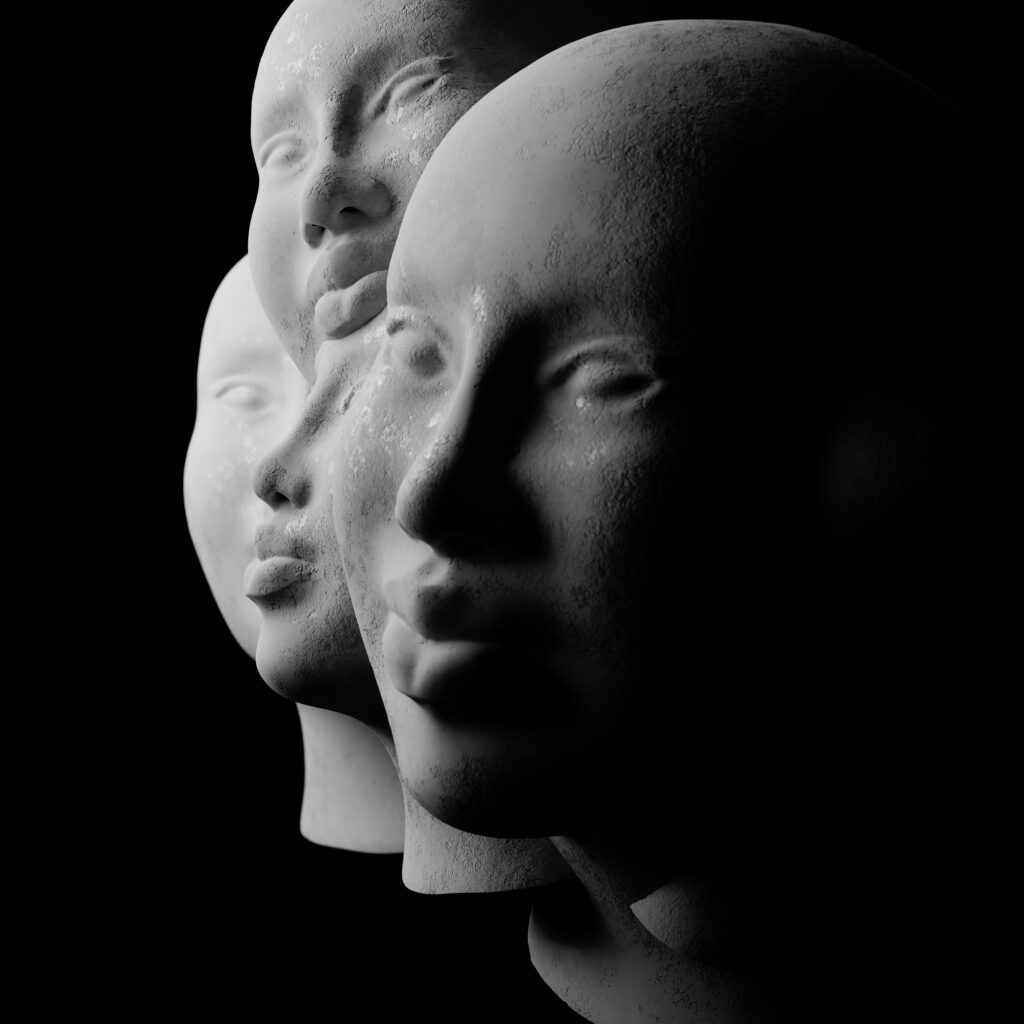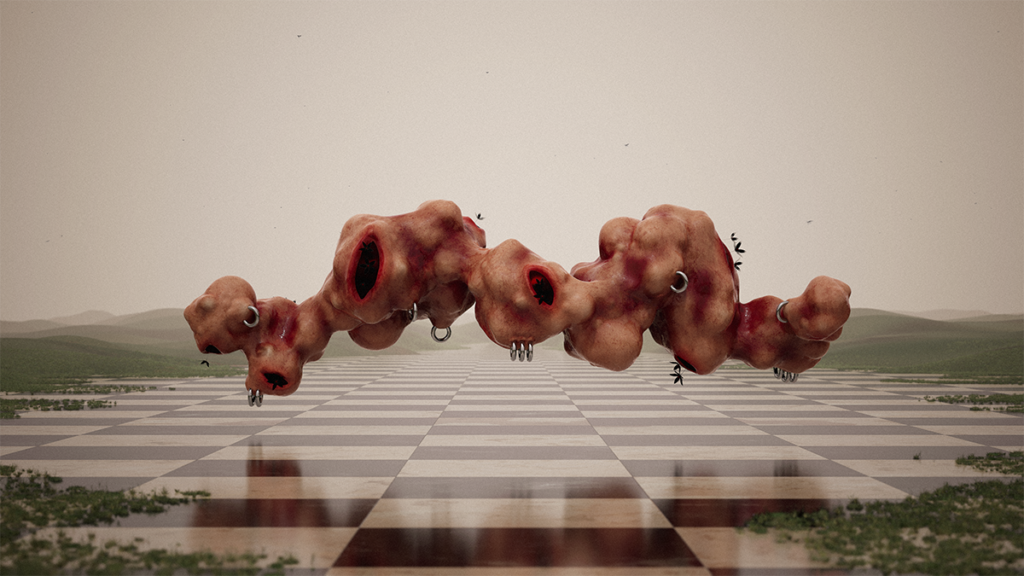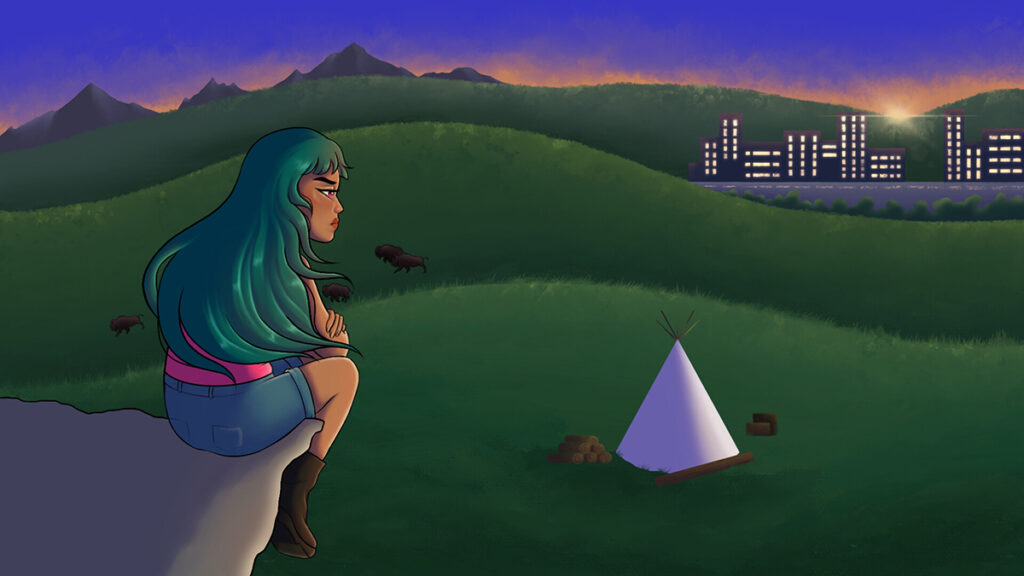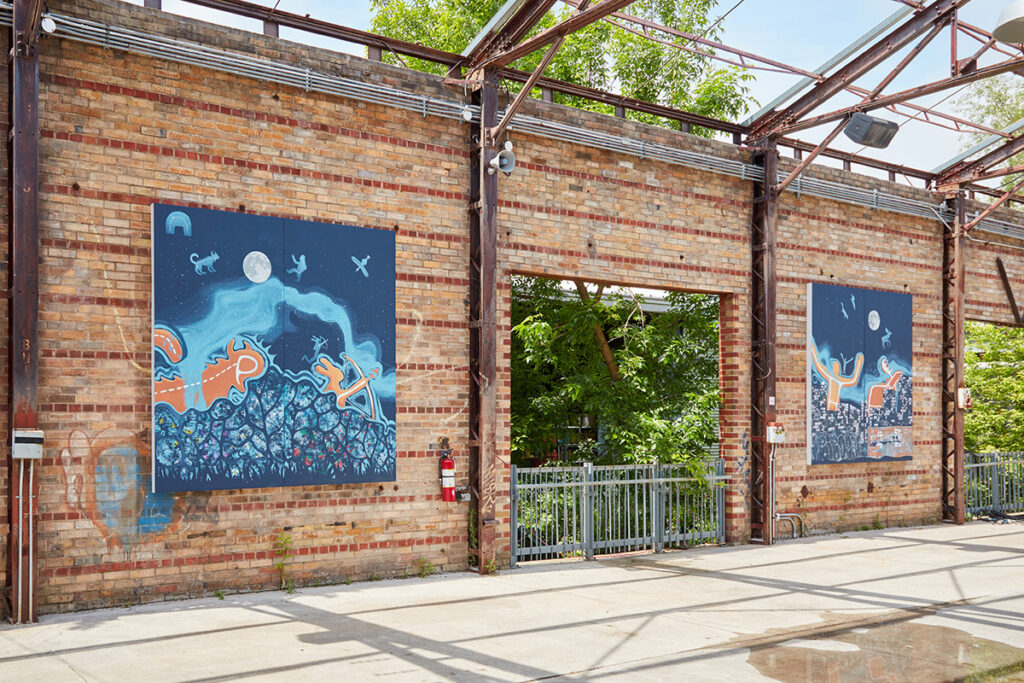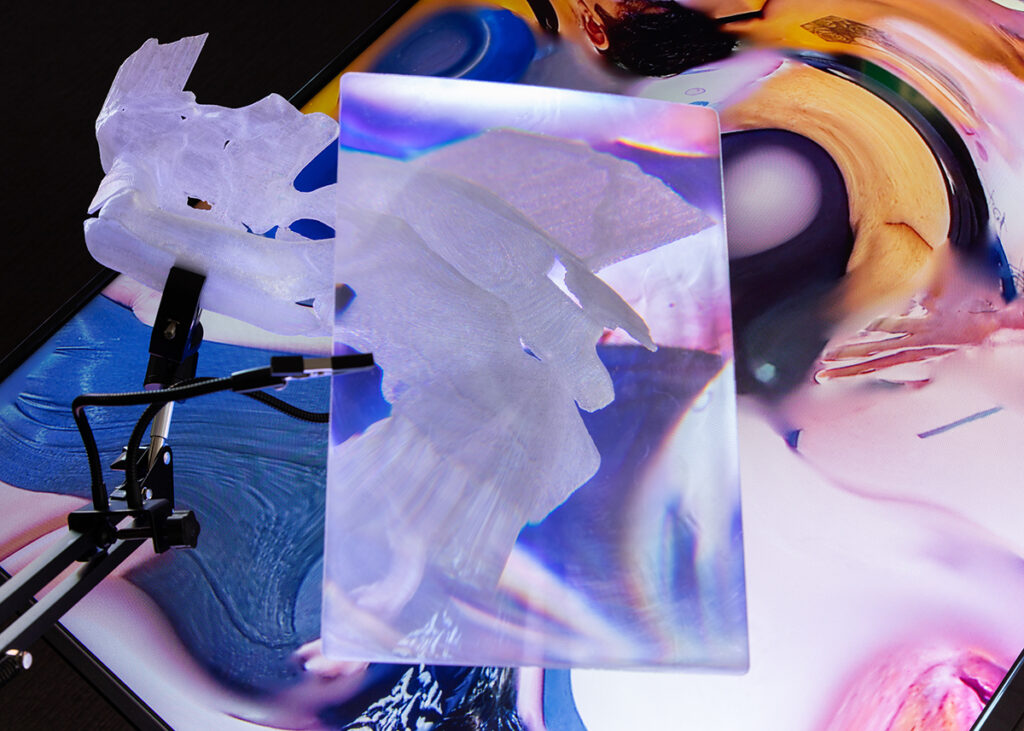Learn more about each of the 2024 recipients and their exceptional works of digital media in the five prize categories below.
MONI OMUBOR
The Backroom, 2023
Digital Image
The Backroom is a triptych of 3D-rendered black and white images that investigate the remnants of colonialism in the artist’s psyche as a Nigerian person of Yoruba ancestry. Set in an imagined museum and playing with aesthetics of afro-surrealism, each panel features selected elements of Yoruba culture. Though this space is speculative in nature and exists outside of our physical reality, it utilizes “western” museum display strategies typically reserved for representing colonized cultures and identities. Omubor subverts these tactics to facilitate deprogramming and to question associated narratives, leveraging the boundlessness of a place untethered by time or physical constraints.
The jury was struck by Omubor’s ability to conjure a space where the museological and the speculative converge. In “The Backroom” we glimpse Omubor’s Yoruba culture, but any narrative around who these spaces are meant for is withheld. Her renderings are elegant, yet static. Are they colonial ruins within the psyche or evidence of a nascent institution in formation? Omubor’s strategy is a powerful reminder that if we look closely, we can find a dream within every refusal. This is a promising start for Omubor and we look forward to watching where her practice will go from here.
– Crystal Mowry, Director of Programs, MacKenzie Art Gallery | 2024 EDAA guest judge
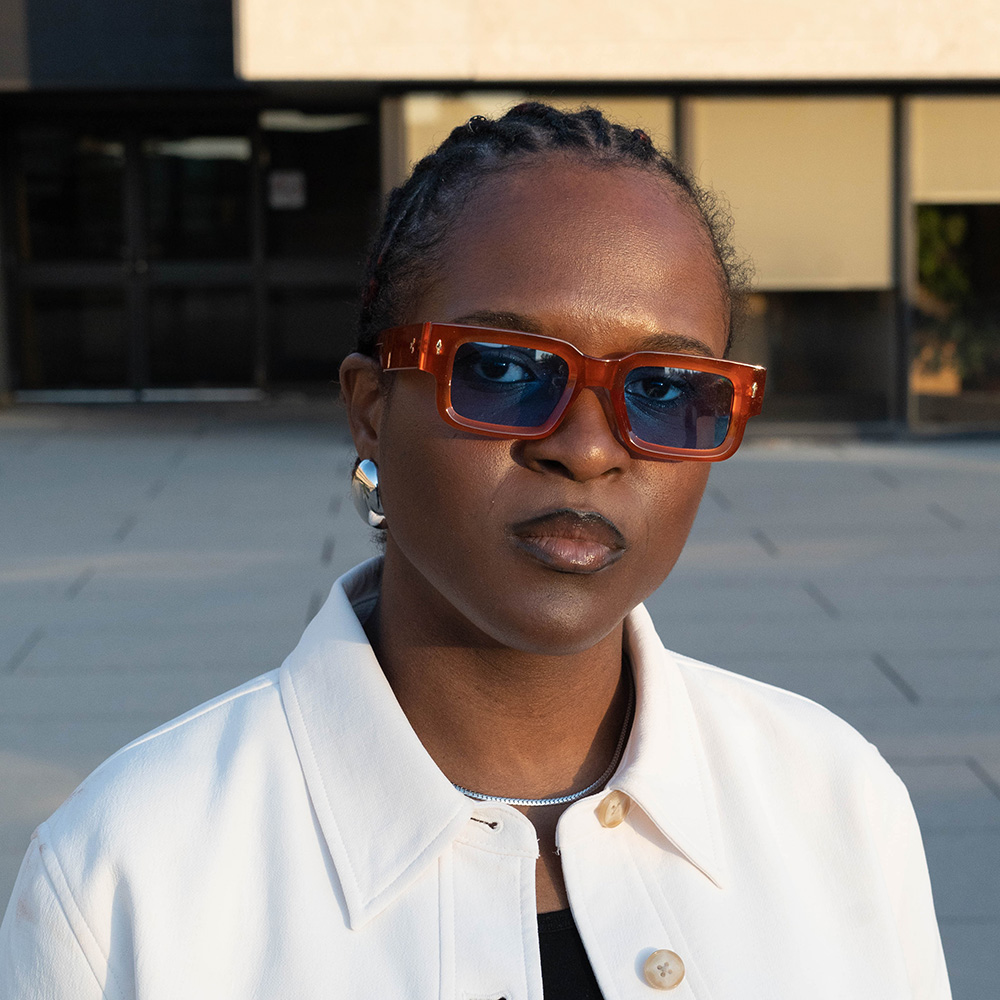
Image: Oseremen Irete
Moni Omubor is a Lagos-born visual artist and designer based in Lethbridge, Alberta. Her new media practice uses speculative fiction to explore the interconnectedness of Black diasporic realities and postcolonial Nigerian identity. She holds a B.Sc. in Architecture and an MFA in New Media from the University of Lethbridge and is a member of the Lethbridge-based Black art collective, We’re Here Too.
CARMILLA SUMANTRY
GRWM, 2024
Animation; 3:38
Audio by Apple Cabrera
GRWM is an acronym for “Get Ready With Me,” referencing a genre of videos by beauty influencers who transform their appearance on camera before going out in public. Created in response to the relentless cycle of ad-driven beauty recommendations that plague our social media feeds, the work features an amorphous, fleshy blob that is cut open, molded, pierced and adorned. GRWM serves as a cultural observation on the impact of social media beauty trends and the accelerated normalization of extreme body modifications, highlighting the absurdity of this pursuit that often comes at the risk of opposite outcomes
Carmilla Sumantry’s “GRWM” is a gorgeous and grotesque depiction of how digital culture molds our physical flesh. Inspired by Get Ready With Me videos, “GRWM” de-personalises the experience by having the performer just be an unspeaking blob of gooey human meat. The blob’s flesh is slick and slimy, evocative of the ‘glass-skin’ trend in skincare and makeup, and it almost swallows up the silver rings that have been put into its body. Sumantry’s version of a GRWM eliminates the focus on products and consumerism typically seen on social media platforms, leaving only the pushing, pulling, and molding of the flesh itself.
– Kara Stone, artist and scholar | 2024 EDAA guest judge
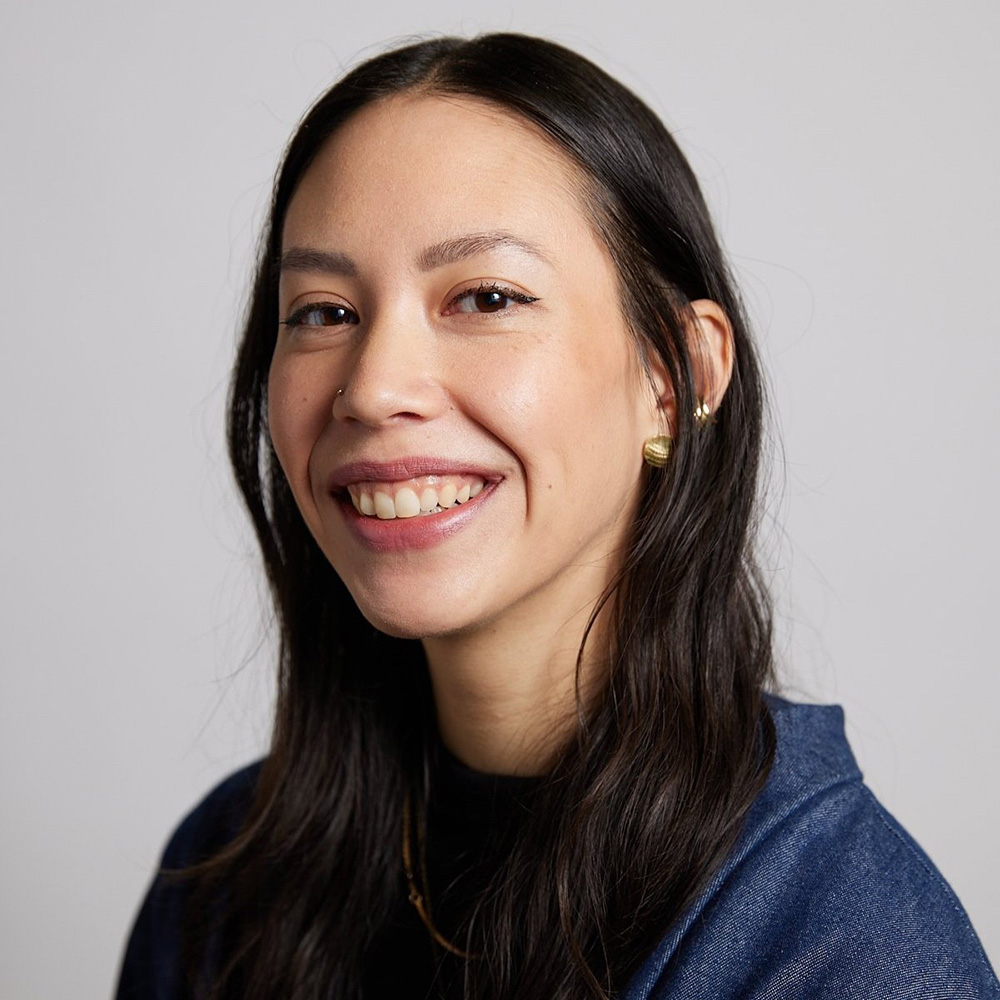
Image: Maryn Devine
Carmilla Sumantry is an interdisciplinary creative based in so-called Vancouver, with a background in industrial design, 3D art, and animation. Her practice explores the relationship between emerging creative technology and art through an existential lens informed by her second-generation Indonesian-Canadian heritage and queer identity.
STUDIO EKOSI
(Caeleigh & Keara Lightning)
Mikiwam, 2023
Game art, dimensions variable
Mikiwam is an Indigenous fantasy narrative about complex relationships, magic, and post-colonial futures. The game features Awâsis, a young woman who recently moved back to her mother’s home community, where she struggles with visions she can’t control while navigating strained relationships with her family. After being taken on as an apprentice by the mysterious healer, Matsi, she learns how to use her unique Gift in seeing people’s moods as elements that can be influenced through magical teas. As Awâsis, players embark on her journey to reconnect with her estranged home and ultimately find her place in a fractured, healing world.
The jury is thrilled to recognize Studio Ekosi for their unique approach to game making, storytelling, and world building. “Mikiwam” is a poignant homecoming story set in a post-colonial future. Rendered with beauty and simplicity, the game centres on navigating a range of interactions with other characters—from tender, to humourous, to fraught—ultimately informing the protagonist’s journey of self-discovery and community building. The work is at once intimate and expansive, compelling us to embrace each level with a heightened awareness of the complex dynamics at play.
– Shannon Linde, Senior Curator, EQ Bank | 2024 EDAA jury chair
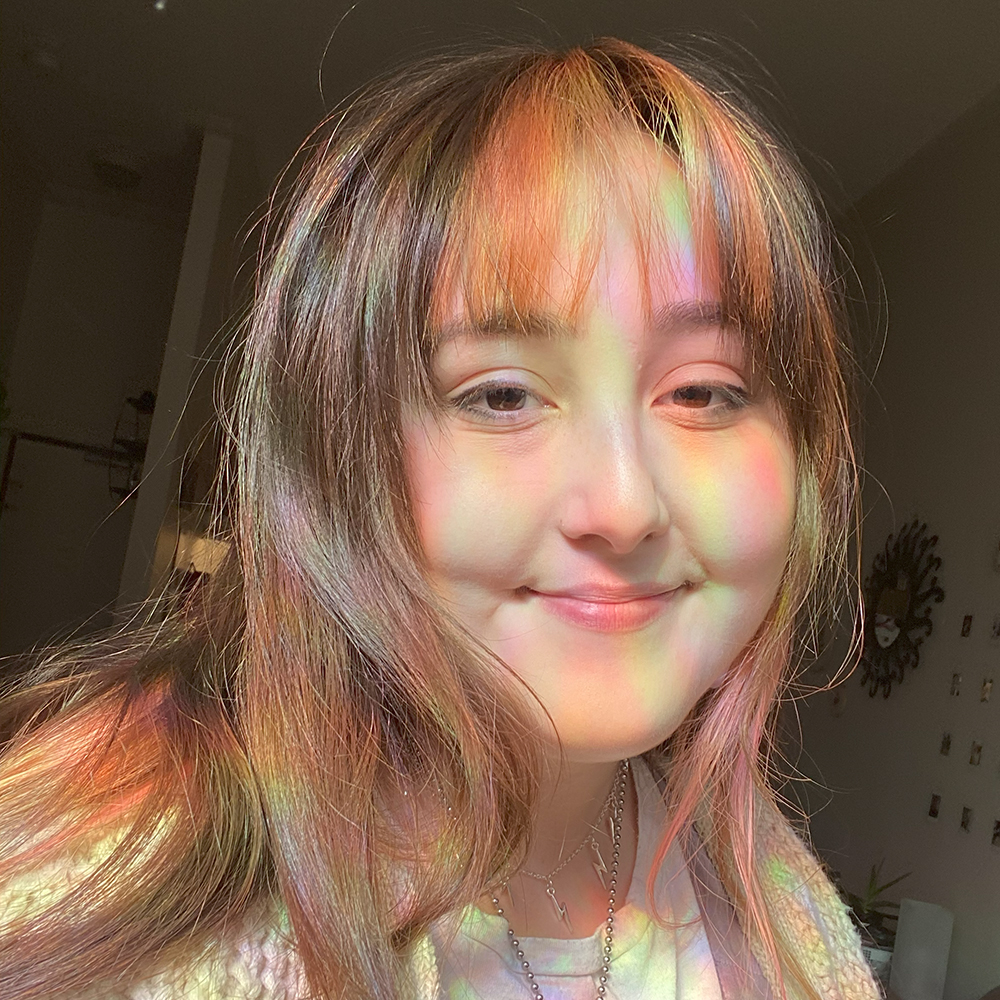

Studio Ekosi is Caeleigh and Keara Lightning, mixed Irish and Nehiyaw sisters based in Edmonton, Alberta. Caeleigh is a Two-Spirit artist and illustrator whose work explores themes of queerness and interconnectivity, and Keara is a PhD student at the University of Alberta, where she advocates for Indigenous-led scientific research. Together, they create narrative games about Indigenous futures.
QUINN HOPKINS
Stellar Narratives, 2024
Augmented Reality
Stellar Narratives bridges the gap between Anishinaabe night sky stories and the city. With each season, a new chapter unfolds, showcasing the constellations that have guided Anishinaabe wisdom for generations. Hopkins uses augmented reality as a new way of sharing stories, connecting audiences to the oral traditions that have long shaped Indigenous knowledge. In inviting urban Indigenous people to look up and rediscover the ancestral stories etched in the stars above them, the work serves as a reminder that the wisdom of the land is still with us, even in the heart of the city.
“Stellar Narratives” by Quinn Hopkins was selected because of its appropriate use of AR as a medium for seeing other layers of knowledge that are not always immediately visible. Through beautiful imagery this piece shares the stories of the Anishinaabe night skies throughout the seasons, virtually overlaying written language and symbols atop traditional physical paintings placed in an urban landscape. The jury applauds this contribution to the international project of ensuring that cyberspace includes Indigenous culture.
– Skawennati, artist and Co-Director, Aboriginal Territories in Cyberspace | 2024 EDAA guest judge
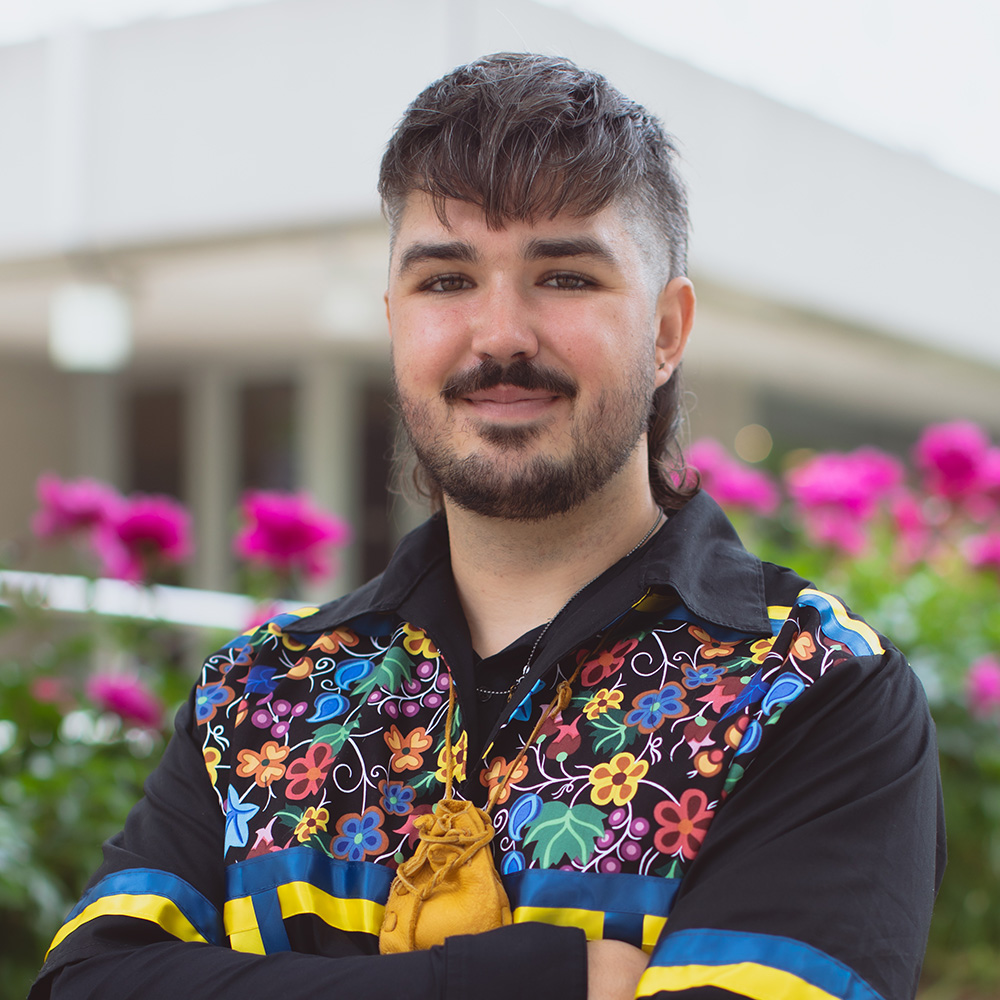
Image: Nadya Kwandibens (Red Works Photography)
Quinn Hopkins is a Toronto-based artist working at the intersection of Urban Indigenous culture and new media, crafting a vibrant dialogue between Indigenous history, urban life, and futuristic visions. Rooted in Anishinaabe-Métis traditions, he reimagines Indigenous iconography for the modern era. His digital creations and immersive installations have been presented at Evergreen Brick Works, Toronto; Thunder Bay Art Gallery; and Hart House at the University of Toronto.
FRANCISCO GONZALEZ-ROSAS
the museum of the copy/pasted identities, 2022
Sculptural and multi-channel video installation
the museum of the copy/pasted identities features a series of digital sculptures set within a digital environment based on South American colonial architecture. The work delves into the visual history and legacies of colonialism in anthropological museums, exploring how otherness is produced through both exhibition displays and digital networks. Gonzalez-Rosas crafts a speculative archeology of the body through photogrammetry, 3D scanning, and CGI-generated avatars, challenging normative approaches to self-representation. The resulting multimedia installation exposes the performativity of contemporary digital self image-making and draws critical connections to strategies of representation within cultural institutions.
Francisco Gonzalez-Rosas’s remarkable installation “the museum of copy/pasted identities” is at once viscerally engulfing and sharply astute. The artist utilizes digital environments, CGI, photogrammetry, 3D printing, video, and more, to address constructions of identity and the body in techno-matrixes of domination. The result is an impressively expansive artwork that is well-researched, meticulously crafted, and aesthetically compelling. The jury was particularly impressed by Gonzalez-Rosas’s artistic approach to installation, which forefronts a wide-ranging use of digital tools in order to challenge colonial legacies of exhibition display.
– Zach Blas, artist and Assistant Professor of Visual Studies, University of Toronto | 2024 EDAA guest judge
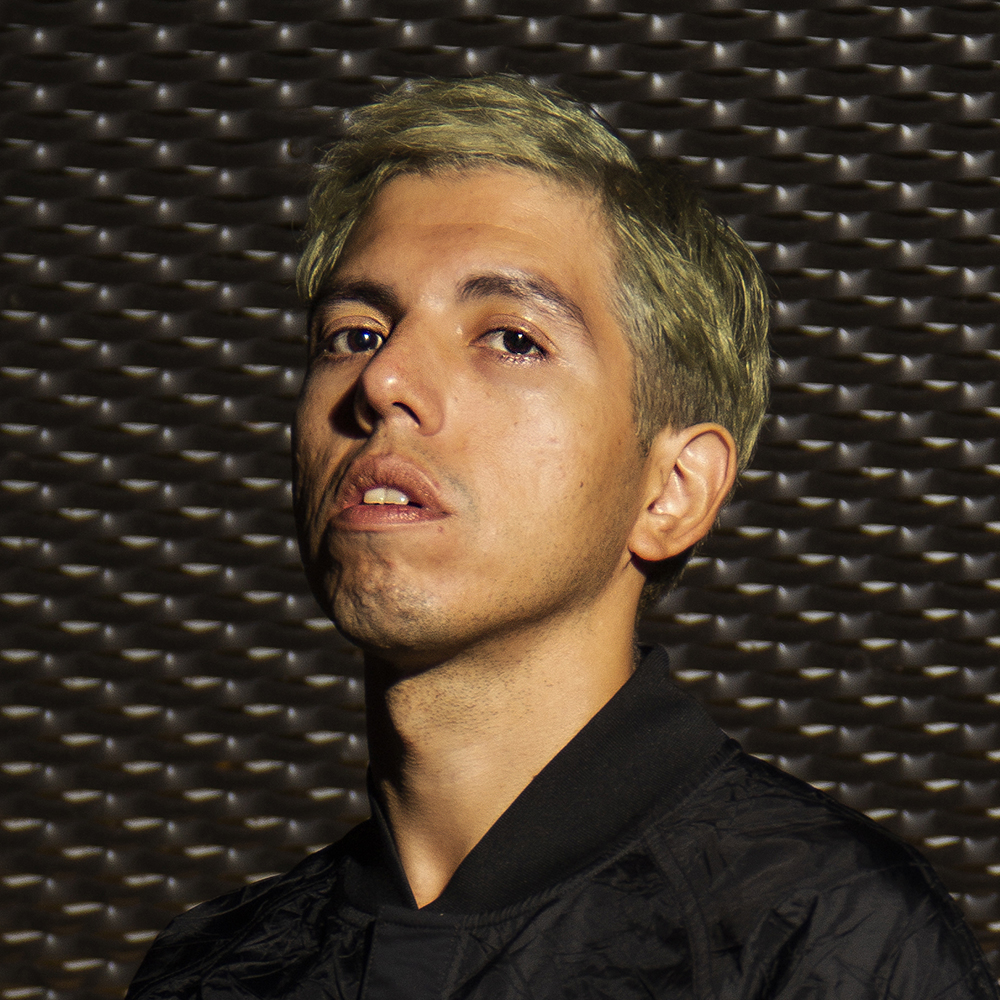
Image: Cuto Reed
Francisco Gonzalez-Rosas (he/they) is a Chilean performance and new media artist based in Tiohtià:ke/Montréal. Their practice explores existing and speculative crossovers between body and technology, emphasizing the politics of these encounters. Francisco holds an MFA in Intermedia from Concordia University, Montreal, and a BA in Acting from Finis Terrae University, Santiago, and their work has been included in exhibitions at Fondation Phi, Montreal; Centre Caravansérail, Rimouski; and Centre for Culture & Technology, Toronto.
